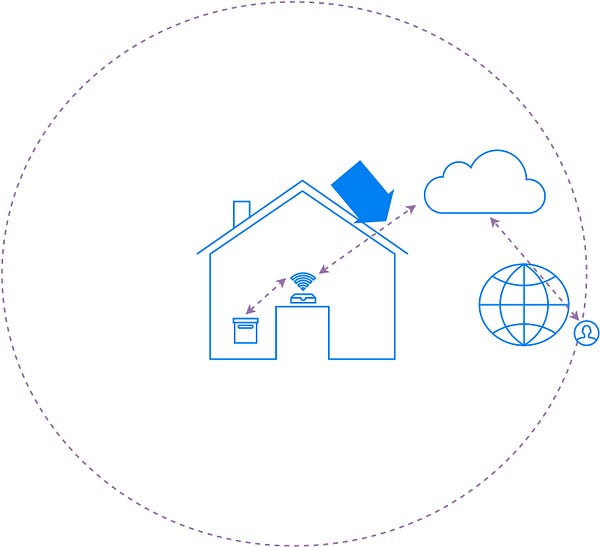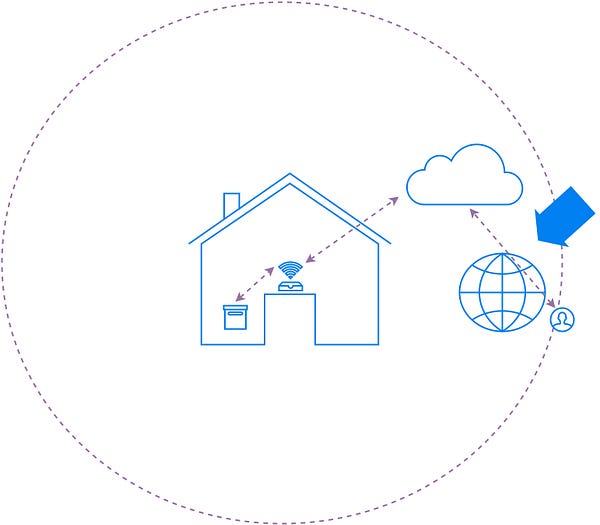
Thursday, December 08, 2016
A seed of an idea
Thursday, August 18, 2016
IoT: Who’s gonna maintain it
As an end-user, how do you ensure that the maker continues to provide timely updates?
If you are an Android user, you know how long it takes for the latest Android updates to make their way on your device. As a phone maker, it’s a lot of effort to incorporate, test and roll-out the upgrades. And on top of that deal with the support requests of users for which the upgrade affected and broke parts of their work flow. And this is a state of affairs for devices that cost you, the end user, upwards of 300/400$.
Now consider you are an end-user for the smart home. You have multiple appliances/devices in your house that are all smart. So what happens for these devices like plugs, bulbs, locks and such which are priced at sub-100 or sub-50 $ price point. If user’s don’t quickly get upgrades for their high-end smart phones, why would they for their IoT devices? Granted the software complexity for IoT devices is much lesser as compared to Android phones, but so are the margins that the makers made.
One reason for necessitating the upgrade is of course security. Newer attack vectors/vulnerabilities continue to get invented and fixes for these should be upgraded across all the deployed devices.
Another reason is maturity/enhancements. With smartdevices, it seems people are settling into the expectation that the device continues to improve over a period of time (Tesla upgrades car to park itself), since the device keeps getting Over-The-Air upgrades.
What is in it for a maker to continue to provide these upgrades?
Reputation?
Will the makers be motivated to ship faster upgrades to retain their reputation? But this hasn’t been motivation enough for Android phone makers to release faster upgrades. Even the largest of Android brands update too slow.
The makers have to spend a lot of money/effort in maintaining, testing and getting the upgrade out. With time, this cost will come down, but until then this will be a big exercise.
Ecosystem?
The ecosystem owners (Google in case of Weave, Apple in case of HomeKit) do have a strong influence on the makers participating in their ecosystem. Particularly because most ecosystems have been driven by a strong focus towards the end-user: simplicity and security. This is a great mechanism to ensure the devices are maintained well. So a big tick-mark for products supporting ecosystems. But considering there are going to be hundreds and hundreds of makers building devices for these ecosystems, how much vigil can the ecosystems keep?
Device As A Service?
What if the end-user doesn’t pay the price full of the product up-front? What if only part of it is paid up-front, and then the rest you pay over a period of time. Essentially, you purchase a service rather than a device. The maker is incentivized to fix issues or you could stop payment. It sounds interesting.
But a smart home could have multiple devices from various vendors. Keeping track of all our recurring payments across all these will be a task and a half. If there is a program that covers devices from multiple vendors and offers these devices as a service, that would be a simplified interface for the end users. It looks a bit convoluted, but could work out well for the end-user.
Others?
Any other options that solve this problem effectively?
Sunday, May 01, 2016
The Dreamz Experience

Sunday, March 20, 2016
Building Secure Connected Devices - II
Local Network Access
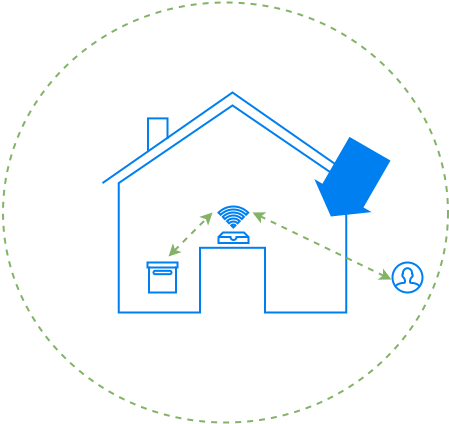
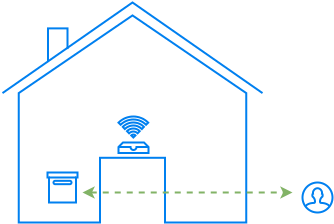
The thing to remember in new device setup is to always authenticate the other endpoint
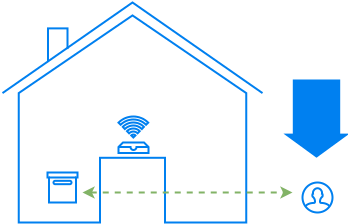
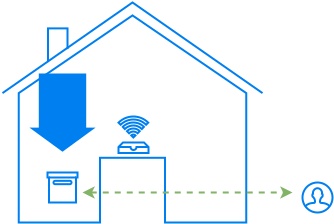
Physical Access

Firmware Upgrades

Tuesday, February 16, 2016
Building Secure Connected Devices - I
(Originally published here, please excuse misalignments, if any)

Why is IoT security a concern?
- Connecting more physical things potentially increases the surface area of the attack vector. While previously the attack could be limited to your email account, or social network account, the attack could now come to your house.
- Newer interactions with these connected devices opens up completely new attack vectors.
- Strong constraints on cost and power of connected devices required a newer breed of hardware to address a lot of the IoT use cases. While embedded devices have been around for a long time, connecting them to the Internet opens them up to a range of attacks that weren’t possible on these devices before. It took a while for the hardware to catch up with the latest security standards for already identified attack vectors.
- As with the rapid increase in cloud/web-service developers, it takes time for newer set of enthusiasts, hobbyists and developers to get acquainted with the attack vectors and their solutions.
Device Interactions


|

|

|
- Physical Access: The first is the physical interactions that the device owner has with her devices. For this interaction you have to be present in the house for operating the device.
- Local Network Access: The second is the access over the local Wi-Fi network. For this interaction you can be anywhere in the vicinity of the house in the Wi-Fi Access Points range.
- Remote Access: Finally, most Wi-Fi devices talk to some cloud services. It may be to facilitate remote access to the owner of the device, or to query other services (weather, electrical pricing etc.).
Remote Access
- man-in-the-middle: snoop your thermostat data from your device to the cloud (Nest), or modify settings from the cloud to the device
- replay attacks: if the data is encrypted, replay the same encrypted packet of data that unlocks the door lock of the house
- DNS spoofing: divert the traffic of your connected toy to a malicious server
- device spoofing: create a malicious/fake camera, and make the cloud believe that the camera belongs to you, the owner, and that the video feed is genuine
